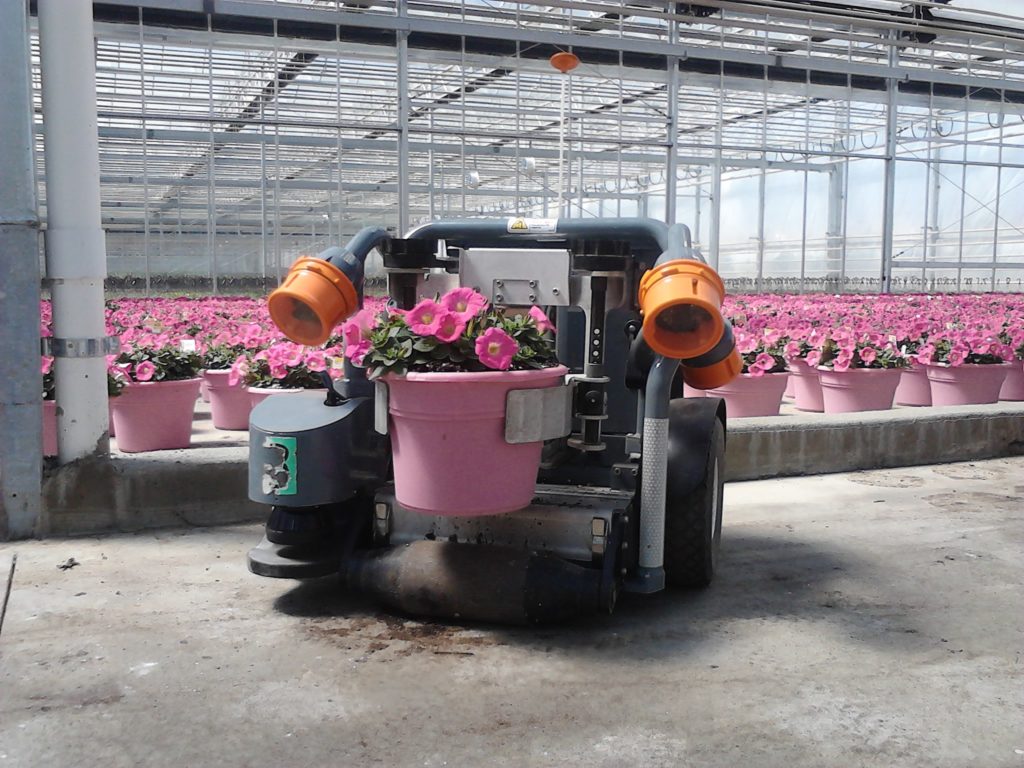
There are many examples of how tech has changed agriculture to improve efficiency. Investment in specialized technology for “doing one thing better” is increasing. More specialized business models have cropped up. With these, specialized skills and equipment supporting IoT wireless data transfer are increasingly important.
More and more, ag businesses have turned to AI, machine learning, and robots for certain necessary tasks. Automated robots use specialization to become proficient at one particular job. One example of this is Harvest Automation’s container-moving robot. Weighing in at just about one hundred pounds, the not-quite two-foot-tall robot works in greenhouse and nursery environments to properly space out container plants.
Meet Harvey, the Plant Robot
The HV-100, also known as “Harvey,” requires zero programming and minimal training or setup. The robot uses sensor technology to identify containers, which it then grasps with its robotic arms. It then follows a pre-set guideline created from reflected tape (provided by the manufacturer) to carry the plant to the proper location.
The unit will place each pot according to a specified pattern. The peak job rate is 240 pots per hour. The robot continues to locate plants and deposit them according to the pattern until it completes the job or is powered down.
The HV-100 is designed for use in typical nursery and greenhouse environments. It can handle rain, dust, and dirt, and has a battery run-time of four to six hours. The robot pauses if it detects a human being in its path. With battery swaps, the robots can continue with tasks on a near-continual basis.
While Harvest Automation’s HV-100 isn’t particularly high-tech–it’s more like Wall-E than a Blade Runner replicant–the units solve challenges for medium and large nursery and greenhouse operations. They will do tedious, back-breaking work as needed, without overtime, extra hiring, or the risk of injury to workers. This allows smaller year-round staff to handle the necessary plant rotations without hiring seasonal temporary help.
While the cost of each HV-100 is significant, typical payback for one unit is less than two years when factoring in lower labor costs, improved production costs, and increased productivity.
This article was originally published on Agritechtomorrow.com on October 22, 2019.
If you need help with industrial automation parts or components, reach out to AX Control today. We can help.

You must be logged in to post a comment.